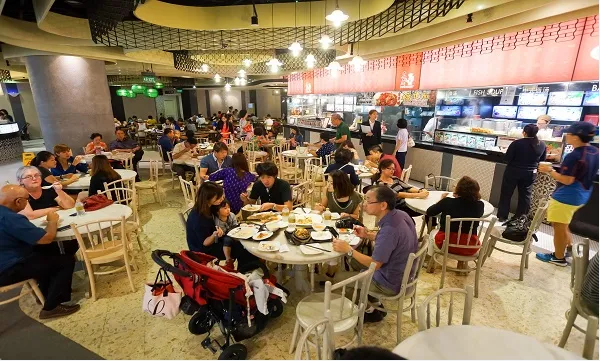
Over 50s to boost delivery boom: The NPD Group
Whilst operators stand to lose part of £1 billion of business as 25-to-34-year-olds curb their eating out habits.
Global information company The NPD Group is predicting a decrease in eat-out or out-of-home (OOH) visits by consumers aged 25-to-34 between now and 2022. Citing its new report, The Future of Foodservice: Great Britain 2022, it says OOH visits in Britain’s foodservice industry amongst this age group will decrease from 20% to around 18% of the industry total of 11.5 billion visits, a drop of two percentage points. This is equivalent to 155 million fewer visits annually and a potential loss in annual spend of up to £800 million. This would represent another strong visit decline after the big drop between 2007 and 2012 in the same age group.
But Britain’s foodservice operators can compensate by targeting the over 50s. According to the NPD Group, that fast-growing demographic will account for more than 70% of the growth in the country’s population between now and 2022 according to the ONS. This is an attractive proposition for British foodservice, especially as many over 50s are wealthier, more active and more experimental when eating out than previous generations. Total OOH visits among people aged 50+ could increase by more than 4% by 2022 (130 million visits), three times faster than the total OOH market.
NPD Group foodservice director UK Cyril Lavenant said, “Foodservice operators seeking growth in the next five years should be aware that business coming from the 25-to-34 age band, which includes many ‘millennials’, is likely to drop. Visits from this age group have been dropping since 2007. One reason is that millennials typically need new experiences and sources of inspiration that the foodservice industry does not necessarily provide."
"The 25-to-34s are also facing higher living costs than ever, especially in housing and childcare, and this is prompting them to cut back on foodservice purchases. Operators and suppliers will have to work hard to determine what could bring the 25-to-34s back to the market. But now is also the right time to think more about the needs of the over 50s. There are huge differences in levels of fitness, mobility and prosperity as people move beyond 50 and into their 60s and 70s. But this is still a big opportunity for the foodservice industry,” he added.
Big spenders and weekenders
Also according to NPD Group, not only will the over 50s account for more visits, they are already the biggest spenders when it comes to eating out. The average bill for the 50-to-64 age group at a full-service restaurant is £13.41, higher than any of the other age bands, including 25-to-34s. The over 65s have the second highest average spend at £13.10. Older customers will also sustain weekend business. The NPD Group says the over 50s will drive more than half of an expected 14% increase in weekend foodservice traffic by 2022, and eventually account for 29% of weekend visits.
Over 50s to boost delivery boom
Britain’s over 50s will strengthen the delivery boom, in which customers order food by phone, online or via apps. The over 50s currently account for 14% of all delivery visits and this will increase three percentage points by 2022 to 17%. While the over 50s currently only account for 8% of delivery via apps, the NPD Group believes this will increase rapidly as older consumers become more app savvy. The NPD Group says the industry can expand home delivery for the over 50s, especially if operators innovate with lighter food options. Menus can offer more low-GI foods, for example, including many fruits and vegetables, beans, minimally processed grains, pasta, low-fat dairy foods and nuts. Menus can do more to assist consumers who are diabetic or who are watching their cholesterol.
Closing the frequency gap
Foodservice operators need to close the ‘frequency gap’ between young and old. Consumers aged 35-to-49 will be visiting OOH foodservice operators more than 253 times a year by 2022, buying anything from an afternoon snack or a lunchtime sandwich at work to a sit-down restaurant meal in the evening. This is a high frequency – more than 1.5 times the visit frequency of the 50-to-64 age group (166 yearly visits per capita in 2022), and 3.5 times the frequency of the over 65s (73 visits per capita predicted for 2022). The foodservice industry can build business by narrowing that gap.
Cyril Lavenant added, “Balancing lower eat-out business among 25-to-34s in the next five years with more business from the over 50s will be a challenge. But Britain’s foodservice operators have the skills to address this. Brands and advertisers in many industries are beginning to make the over 50s more of a priority and the foodservice industry should do the same.”



























